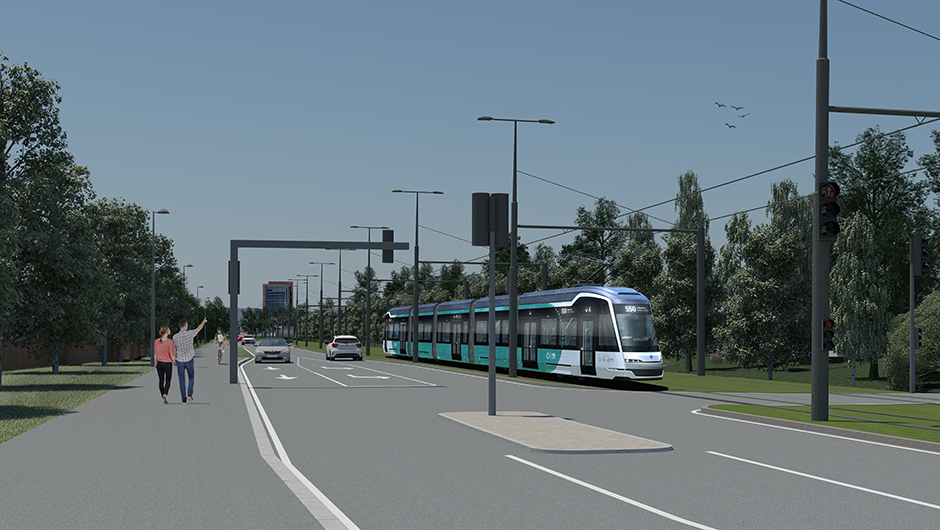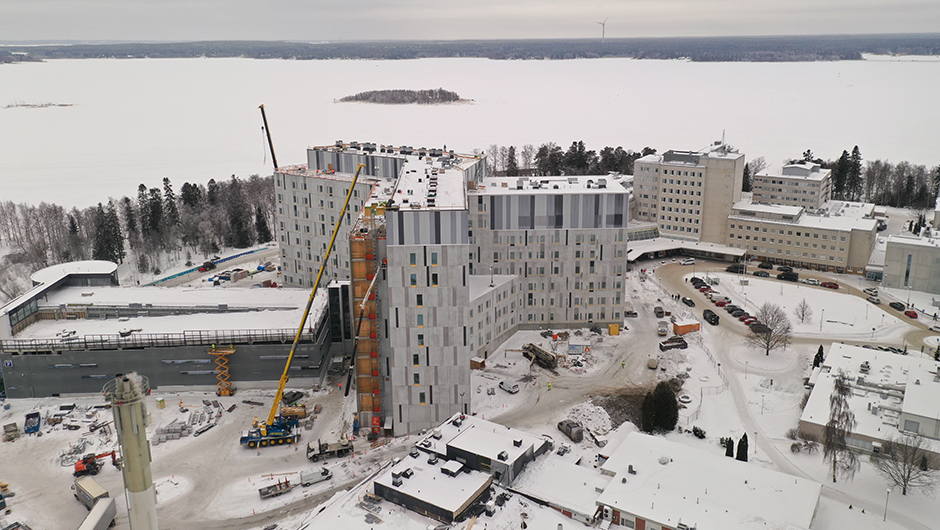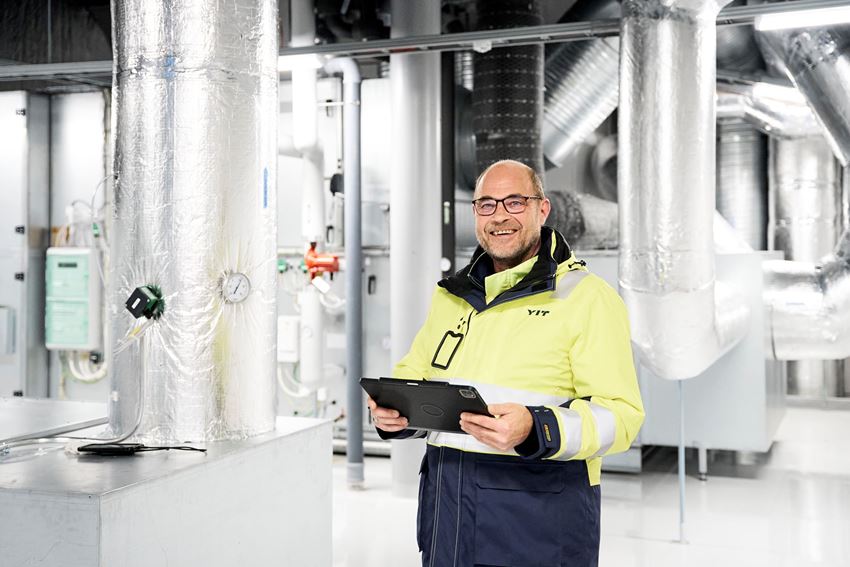Sustainable data centers as a service
- Traffic
- City
- Premises
- Rails, roads, bridges
- 4/21/2021
In an alliance, trust is built through openness and interaction
Trust is one of the cornerstones of an alliance. Successful cooperation requires trust between the parties. But how to develop trust in an alliance?

Selecting an alliance as the implementation method does not automatically mean that everything will run smoothly. A successful alliance requires trust between the client, the designer and the constructor. After trust is established, the work becomes much easier. Once lost, trust is difficult to rebuild.
There may be some problems and misunderstandings at the beginning when the parties are unsure about the distribution of responsibilities.
“After months of planning as a contractor, I discovered that the original designer’s plans for the implementation of an additional structure were completely different than ours. I nearly broke into tears. I don’t know how we managed to discuss the implementation and completely misunderstand each other for almost six months.”
Juha Saarikoski from the Helsinki City Transport works as the client organisation's Project Manager for Jokeri Light Rail and believes that cooperation and interaction skills are particularly emphasised in managerial and supervisory duties and in the shared Big Room functions; you must know how to listen to others and value their opinions as well as be able to change your own opinion, if necessary.
“Creating trust means that everyone must both have the courage to trust others and be genuinely worthy of trust. You definitely can’t give the impression that you’re scheming something or looking after your own interests,” says Saarikoski.
In addition to the parties in the alliance project, you must be able to build trust with external stakeholders, such as end users and taxpayers. Listening to the wishes and views of different parties and openly and honestly communicating the progress of the projects helps here as well.

Open mind and open books
“In the beginning, an end-of-week meeting wasn’t enough to discuss all the necessary topics, which is why we reserved one afternoon each week for talking about the management system, the goals of the project and the alliance and the ways of working. The discussions really brought the participants together. Unfortunately, the people who had the most dire need for a consistent vision or even for an understanding of why such a vision is needed were often absent.”
The development of an alliance work group takes time. Constantly working together builds trust in the professional skills and honesty of the other party and in their willingness to promote the interests of the project.
Markus Kaustinen, YIT Project Manager for the Bothnia High 5 alliance of Vaasa Central Hospital, says that the project team regularly reflected on their performance and that of the entire personnel. This helped the team discover ideas for further development and inspired them to act on the ideas.
Bringing all the operators under the same contract in an alliance means that all the bookkeeping is open and that all activities from invoicing to cost monitoring and predictions are transparent.
“Trust is easiest to build by setting an example, acting transparently, not hiding things and not keeping separate accounts,” says Kaustinen.
Arguing benefits no one
Not everyone will agree on everything, even in an alliance. There will always be some conflicts. Even in a conflict, openness is key; issues should be solved openly and without accusations. In an alliance, the mindset should always be “us versus the problem” instead of “me versus you”.
“Sometimes, when we’d encounter problems, we’d simply say that it doesn’t matter whose fault it is. The main goal is to fix the problem. Thanks to the alliance model, everyone wants to get things right as quickly as possible. Arguing benefits no one.”
The rules established for the alliance help the parties act right. Trust is always rule number one, the starting point and the foundation for all operations.
“We printed out the rules of the project, had everyone sign them and placed them on the wall in the Big Room. The rules serve as a benchmark for our completed tasks and help us reflect on our activities,” says Markus Kaustinen.
If an issue cannot be solved by the project group, it is forwarded to the alliance management team. While other project models usually forward conflicts to a court of law, the alliance model means that the leadership team discusses the matter until all the parties reach an agreement.

Benefits for the entire construction industry
According to Project Manager Saarikoski from the Jokeri Light Rail project, an alliance is at its best when it can be used to update old, dusty notions of how construction projects should be carried out.
“It means being bold enough to challenge the established ways of working and coming up with better solutions,” says Saarikoski.
Markus Kaustinen, Project Manager of the Bothnia High 5 alliance, finds it important to involve all the parties in the alliance from the beginning. This gives the constructor, for example, the opportunity to influence the project in the design stage, which is not possible in all project models. Bringing all the parties together to promote the project as quickly as possible ensures that all the parties are able to present their views and ideas.
“Using the expertise of all the parties means cost-efficient, functional, reliable and high-quality solutions,” says Kaustinen.
An alliance benefits not only the project but the entire construction industry. The lessons learned in the alliance experience can be used in future projects.
“Alliance projects are giving rise to a new generation of clients, constructors and designers who are used to daily cooperation across client-constructor-designer borders,” says Saarikoski.
ORDER MORE INFORMATION ABOUT Alliance model
Basics of Alliance
An alliance is a project model based on open and transparent cooperation. The project organisation formed by the parties is mutually responsible for the planning and construction of the project. What separates alliances from a traditional project model is that everything, from the organisation to the contracts and ways of working, is shared. The risks and benefits are also shared, which means that everyone wins or loses – together. Alliances are mainly used in challenging projects involving many uncertainties and stakeholders, such as industrial projects, hospital projects or public transport projects.
The Bothnia High 5 alliance of Vaasa Central Hospital is quite a typical example of a project alliance; it involves five parties with a shared goal of building 37,000 m2 of various healthcare facilities, services and wards.
Jokeri Light Rail, on the other hand, is an exceptional alliance project in many ways. It has two clients instead of one, and it is the first alliance project for the clients, Helsinki and Espoo. For an alliance, Jokeri Light Rail is also an enormous undertaking; the eight operators have up to 900 people working on the project.
“There are several light rail projects either currently being planned or included in the local master plan of Helsinki metropolitan area. Jokeri Light Rail is the first to reach the implementation stage, which put pressure on its success,” says the client organisation's Project Manager Juha Saarikoski from the City of Helsinki.



